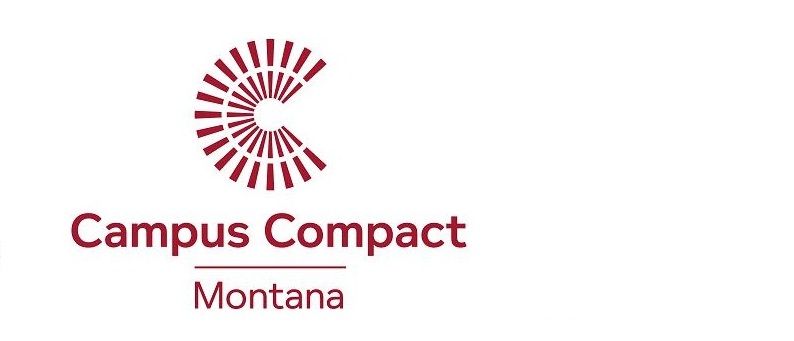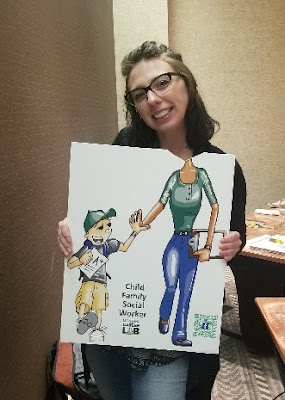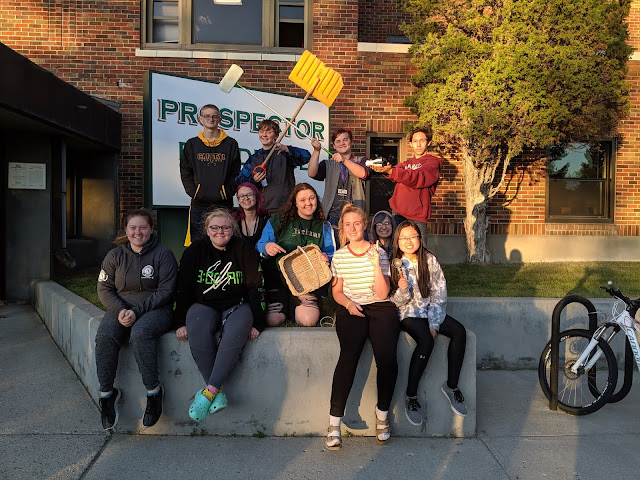Scientific magazines, documentaries, and science fiction have all been a weekly, if not daily, part of my life for as long as I can remember. Even then, I wasn’t sure until my second semester at college whether I was going to be able to pursue a STEM based degree. The self-doubt and uncertainty for if I was good enough to even try was off put in the end by the simple desire to learn more. And as I learn more about different forms of education, and have been working more and more with youth in the community, it is a topic that seems to come up weekly.
My motivation for moving to Montana and working through Montana Campus Compact was in part to learn if I wanted to pursue the path of becoming a teacher. Part of my service here in Butte, MT is to assist with an after school science program at M. Leary Elementary School. This program has offered me the insight and experience I sought, but it also has emphasized to me the importance of supporting the curiosity of the youth in all communities and a teacher/academic mentor’s ability to direct innate human curiosity into a desire to learn.

Human curiosity expresses itself in the students on a weekly basis. From going off-script while working with snap circuit boards to produce the same result in both more complicated or simpler ways, to making homemade thermometers and working with them to figure out if warmth or cold (and how to achieve those conditions to test) will make the red liquid move up or down the straw. The reasoning for why these experiments work the way they do is sometimes obvious for those of us who are older and know at least basic examples of liquid expansion (water to ice) or principles of force and air pressure (ever squeezed a juice pouch when you were younger to get the juice up the straw?). And even if in a group you are not able to fully explain these principles to every student, I have seen how even experiencing these phenomena in an academic setting and encouraging questions is enough to begin developing a desire to learn more.
It’s not learning the answers to every question that makes you learn the most in life, or become a brilliant academic, and yet the very principle of having the predetermined answer to every question is what we are increasingly judging students by. The desire to learn is a skill, a mindset that transfers across all subjects in life. So through personal, and now observation based, experience, I am left wondering what indeed are the best ways to approach the education of our country’s youth?
I believe that through the services we provide as AmeriCorps leaders that we can create a variety of safe and engaging spaces for students within a range of topics, and that this space should be not only to aid them in succeeding in the district and federally determined academic standards of education. Rather, if we make sure to implement the value of learning and provide experiences for them to develop a desire to learn more about any subject then we are better preparing them for any array of futures.
Every set of community, school, and class dynamics will differ as greatly as an individual’s experiences and perspectives in life. There is no silver bullet to education, and any number of factors need to be considered when planning a course let alone a restructuring of the entire system. Besides social, political, and structural changes which would allow for the shifting of our entire education system. I have come to view our work as AmeriCorps members to be a very important one. The work we do is not always groundbreaking, but, as has been highlighted in recent weeks by various news articles and speakers at recent conferences, taking a year or two out of our life to aid dozens if not hundreds of students who cross through the threshold wherever we serve is something that does not go unnoticed in the larger scale of things. This leads me to two additional thoughts about our work in AmeriCorps. One, that the pure number of hours and range of locations that members serve at is something that in and of itself shows the breadth of possible good done by another under-paid and under-utilized sector of our society and economy. And two, that it is a grand shame that it is necessary for a small sub-sector of the government to attempt to remedy the larger inequities and failings of the government at large to support not just the broad sector of ‘social services’ but specifically the education systems which are the backbone to every aspect of our society since it is how we learn about the world, our country, our community, ourselves, and how to best support the very places we live.

A desire to learn is innate in every human when we are born; we are blank slates, sponges, who observe and absorb everything in our environment. And yet we have managed to progress to a society where this is not acknowledged, where the growth of all our children is not emphasized. And furthermore, where knowledge is taken for granted and not emphasized at the level of the general population.
At a time when misinformation and snap decisions can have lasting impacts on larger communities than ever before, my service through AmeriCorps has shown me the importance of giving aid at an individual level, and how even students who are considered smart and don’t have issues at school aren’t given the space to develop further skills and instead stagnate. It is fairly well known that schools in this country are constrained by having to focus on the lowest performing students, at the consequence of having their schools lose funding and potentially being shut down. The education focused groups within AmeriCorps can work to relieve this pressure on districts by working in classrooms, creating and working at after school programs, but the numbers don’t add up to these efforts being the solution to the problem.
Thus the question remains, through all of our experiences serving in AmeriCorps, how can we take what we learn, what we see, and what local people and educators tell us and culminate it into real change? Is there, or could there be, a format for this work and experience to mean more? What will it take for our country and society to put the education, and therein personal and economic well being, of her citizens first?
 Our Youth programs here at EmpowerMT are geared toward providing a safe space to the most vulnerable populations in our community. Within this space, the youth build relationships with peers and adults through open non-judgmental dialogue, transforming conflict, learning how social groups experience mistreatment and develop their skills as youth leaders in action. All of these skills are backed by our partnership with Hello Insight and the Aspen Institute through Social and Emotional Learning. Incorporating theory, service learning, SEL capacities, and EmpowerMT’s mission into the work has been a very impactful experience on a personal and professional level.
Our Youth programs here at EmpowerMT are geared toward providing a safe space to the most vulnerable populations in our community. Within this space, the youth build relationships with peers and adults through open non-judgmental dialogue, transforming conflict, learning how social groups experience mistreatment and develop their skills as youth leaders in action. All of these skills are backed by our partnership with Hello Insight and the Aspen Institute through Social and Emotional Learning. Incorporating theory, service learning, SEL capacities, and EmpowerMT’s mission into the work has been a very impactful experience on a personal and professional level. Not only did I have the opportunity to learn about this curriculum and work with an amazing youth team staff, but I also facilitated the curriculum with the groups and watched the youth explore their curiosities, listened as they told their stories, and affirmed their experiences and leadership skills. The social and emotional wellbeing of our youth is a topic that often gets overlooked in comparison to academics. I’m a firm believer that Academic self-efficacy is as essential as a positive identity, contribution to the community at large, social skills with others, and critical consciousness of our systems. Working with EmpowerMT and youth programs have been a tremendous process to explore. My service term with MTCC has also allowed me to find my heart within the work and know what it’s like to give back, feel a sense of belonging, and love service.
Not only did I have the opportunity to learn about this curriculum and work with an amazing youth team staff, but I also facilitated the curriculum with the groups and watched the youth explore their curiosities, listened as they told their stories, and affirmed their experiences and leadership skills. The social and emotional wellbeing of our youth is a topic that often gets overlooked in comparison to academics. I’m a firm believer that Academic self-efficacy is as essential as a positive identity, contribution to the community at large, social skills with others, and critical consciousness of our systems. Working with EmpowerMT and youth programs have been a tremendous process to explore. My service term with MTCC has also allowed me to find my heart within the work and know what it’s like to give back, feel a sense of belonging, and love service.








































